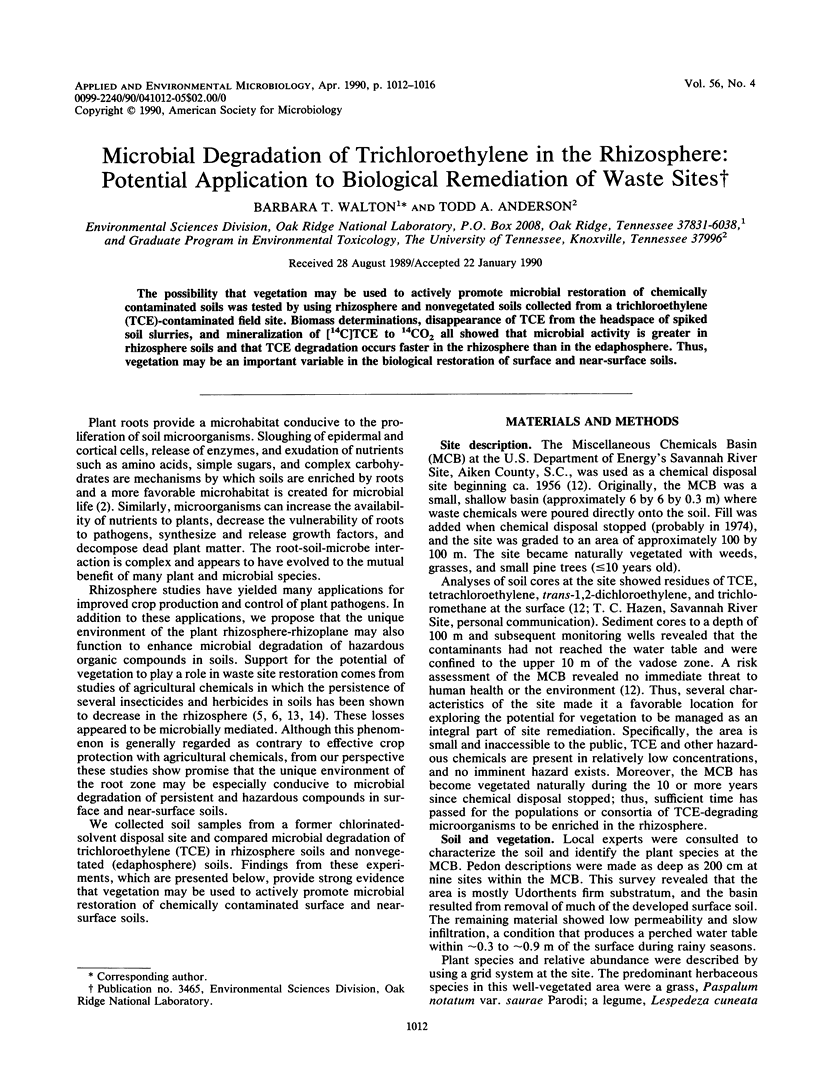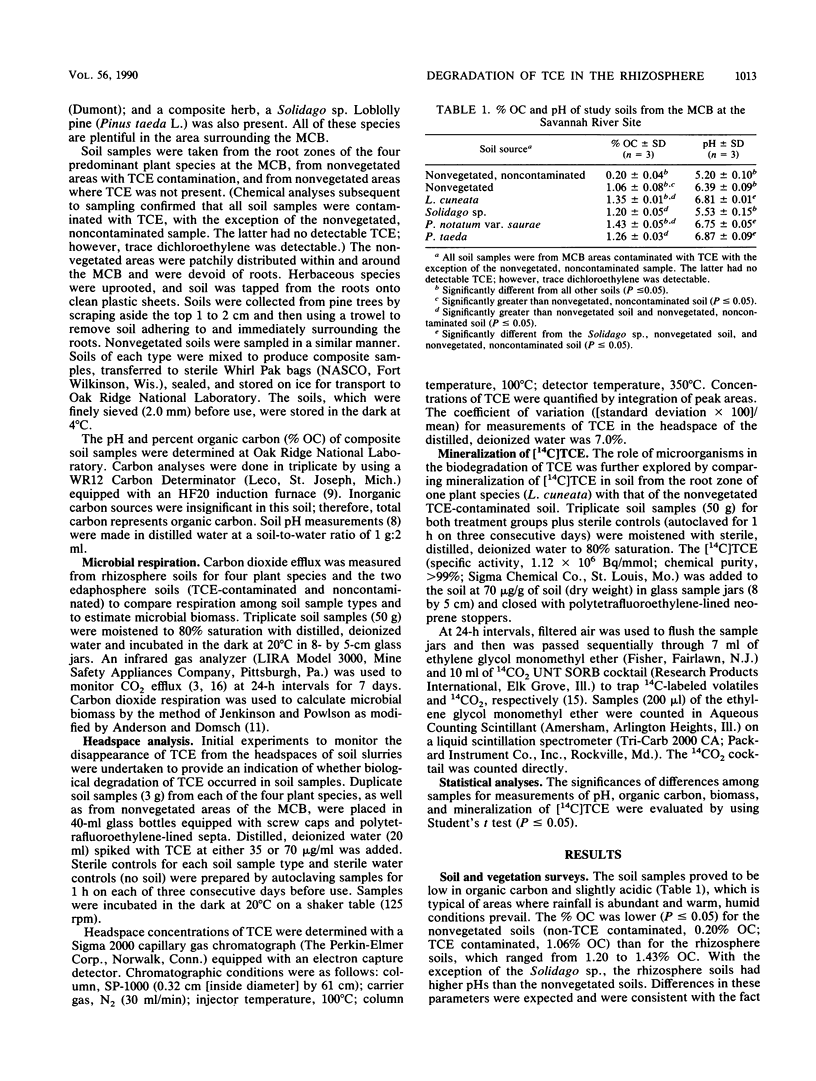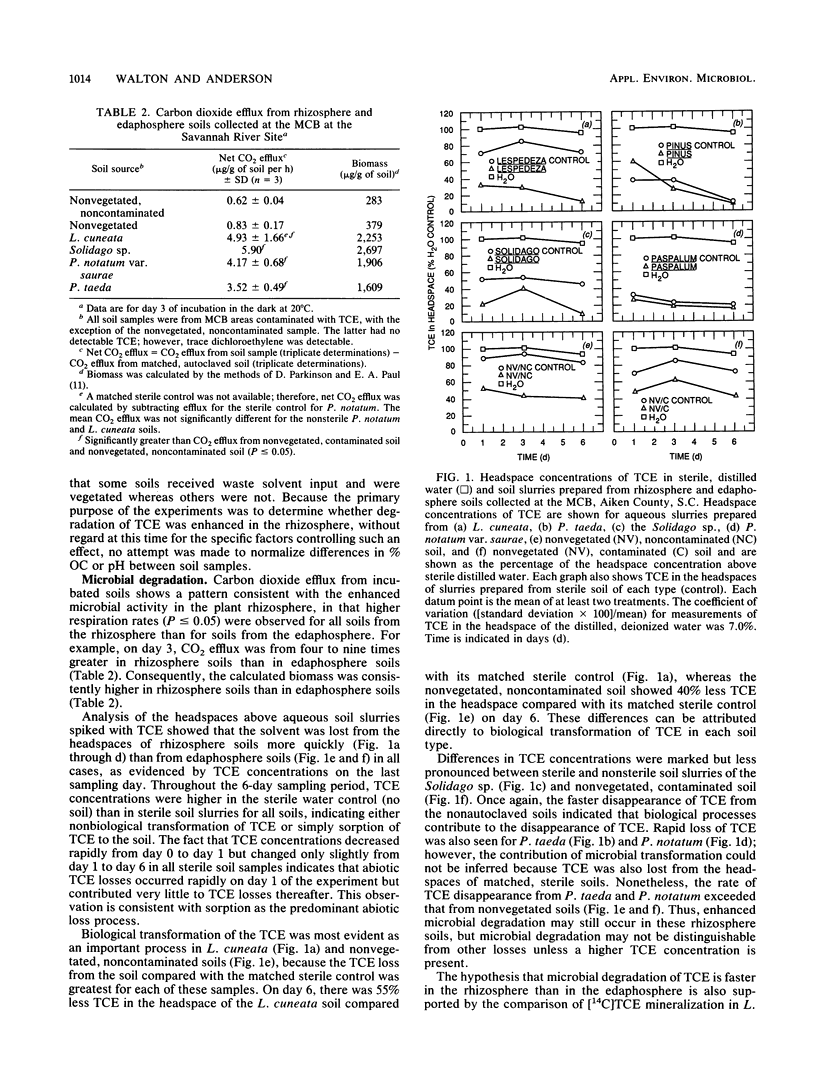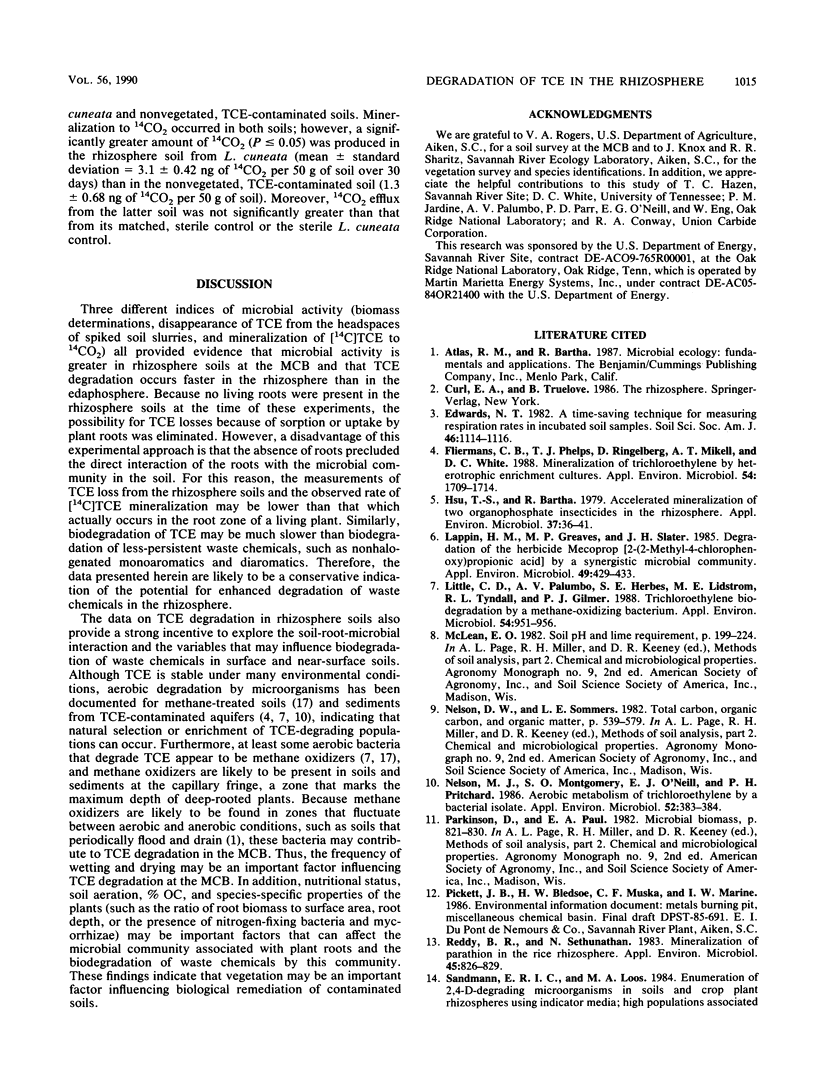Abstract
The possibility that vegetation may be used to actively promote microbial restoration of chemically contaminated soils was tested by using rhizosphere and nonvegetated soils collected from a trichloroethylene (TCE)-contaminated field site. Biomass determinations, disappearance of TCE from the headspace of spiked soil slurries, and mineralization of [14C]TCE to 14CO2 all showed that microbial activity is greater in rhizosphere soils and that TCE degradation occurs faster in the rhizosphere than in the edaphosphere. Thus, vegetation may be an important variable in the biological restoration of surface and near-surface soils.
Full text
PDF




Selected References
These references are in PubMed. This may not be the complete list of references from this article.
- Fliermans C. B., Phelps T. J., Ringelberg D., Mikell A. T., White D. C. Mineralization of trichloroethylene by heterotrophic enrichment cultures. Appl Environ Microbiol. 1988 Jul;54(7):1709–1714. doi: 10.2172/666263. [DOI] [PMC free article] [PubMed] [Google Scholar]
- Hsu T. S., Bartha R. Accelerated mineralization of two organophosphate insecticides in the rhizosphere. Appl Environ Microbiol. 1979 Jan;37(1):36–41. doi: 10.1128/aem.37.1.36-41.1979. [DOI] [PMC free article] [PubMed] [Google Scholar]
- Lappin H. M., Greaves M. P., Slater J. H. Degradation of the herbicide mecoprop [2-(2-methyl-4-chlorophenoxy)propionic Acid] by a synergistic microbial community. Appl Environ Microbiol. 1985 Feb;49(2):429–433. doi: 10.1128/aem.49.2.429-433.1985. [DOI] [PMC free article] [PubMed] [Google Scholar]
- Little C. D., Palumbo A. V., Herbes S. E., Lidstrom M. E., Tyndall R. L., Gilmer P. J. Trichloroethylene biodegradation by a methane-oxidizing bacterium. Appl Environ Microbiol. 1988 Apr;54(4):951–956. doi: 10.1128/aem.54.4.951-956.1988. [DOI] [PMC free article] [PubMed] [Google Scholar]
- Nelson M. J., Montgomery S. O., O'neill E. J., Pritchard P. H. Aerobic metabolism of trichloroethylene by a bacterial isolate. Appl Environ Microbiol. 1986 Aug;52(2):383–384. doi: 10.1128/aem.52.2.383-384.1986. [DOI] [PMC free article] [PubMed] [Google Scholar]
- Reddy B. R., Sethunathan N. Mineralization of parathion in the rice rhizosphere. Appl Environ Microbiol. 1983 Mar;45(3):826–829. doi: 10.1128/aem.45.3.826-829.1983. [DOI] [PMC free article] [PubMed] [Google Scholar]
- Wilson J. T., Wilson B. H. Biotransformation of trichloroethylene in soil. Appl Environ Microbiol. 1985 Jan;49(1):242–243. doi: 10.1128/aem.49.1.242-243.1985. [DOI] [PMC free article] [PubMed] [Google Scholar]


